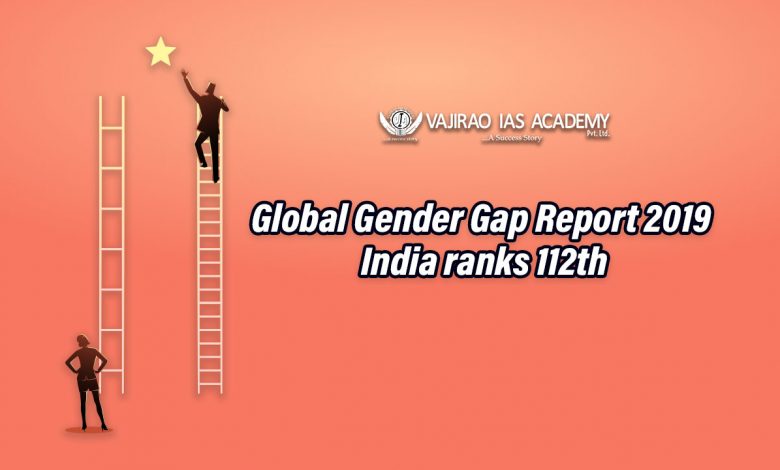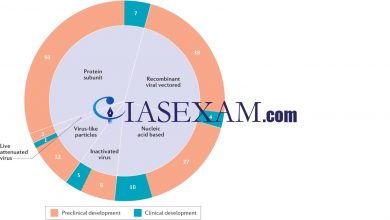Global Gender Gap Report 2019 – India ranks 112th

India has slipped four places to rank 112th globally in terms of gender gap amid widening disparity in terms of women’s health and survival and economic participation — the two areas where the country is now ranked in the bottom-five. India has moved down the ladder from its 108th position last year on the World Economic Forum’s Gender Gap Report to rank below countries like China (106th), Sri Lanka (102nd), Nepal (101st), Brazil (92nd), Indonesia (85th) and Bangladesh (50th).
Yemen is ranked the worst (153rd), while Iraq is 152nd and Pakistan 151st.
Nordic countries continue to lead the way to gender parity and Iceland is followed by Norway, Finland and Sweden in the top-four. In the top-10, they are followed by Nicaragua, New Zealand, Ireland, Spain, Rwanda and Germany
As per the reports, the political gender gap will take 95 years to close, compared to 107 years last year. Worldwide, women now hold 25.2 per cent of parliamentary lower-house seats and 21.2 per cent of ministerial positions, compared to 24.1 per cent and 19 per cent, respectively last year.
India Findings of the Report
The WEF said economic opportunities for women are extremely limited in India (35.4 per cent), Pakistan (32.7 per cent), Yemen (27.3 per cent), Syria (24.9 per cent) and Iraq (22.7 per cent).
It also named India among countries with very low women representation on company boards (13.8 per cent), while it was even worse in China (9.7 per cent).
On health and survival, four large countries — Pakistan, India, Viet Nam and China — fare badly with millions of women there not getting the same access to health as men.
It also flagged abnormally low sex ratios at birth in India (91 girls for every 100 boys) and Pakistan (92/100).
Women account for only 14 per cent of leadership roles (136th) and 30 per cent of professional and technical workers. Only one-quarter of women, compared with 82 per cent of men, engage actively in the labour market — one of the lowest rates globally (145th). Furthermore, the female estimated earned income is mere one-fifth of the male income, again among the world’s lowest (144th).
India ranks high on the political empowerment sub-index, largely because the country was headed by a woman for 20 of the past 50 years. But, female political representation today is low as women make up only 14.4 per cent of Parliament (122nd rank globally) and 23 per cent of the cabinet (69th).
About WEF
The World Economic Forum, based in Cologny, Geneva, Switzerland, is an NGO, founded in 1971. The WEF’s mission is cited as “committed to improving the state of the world by engaging business, political, academic, and other leaders of society to shape global, regional, and industry agendas”. The Global Gender Gap Report was first published in 2006 by the World Economic Forum. The report’s Gender Gap Index ranks countries according to calculated gender gap between women and men in four key areas: health, education, economy and politics to gauge the state of gender equality in a country. The report measures women’s disadvantage compared to men, and is not a measure of equality of the gender gap. Gender imbalances to the advantage of women do not affect the score.





.png)



